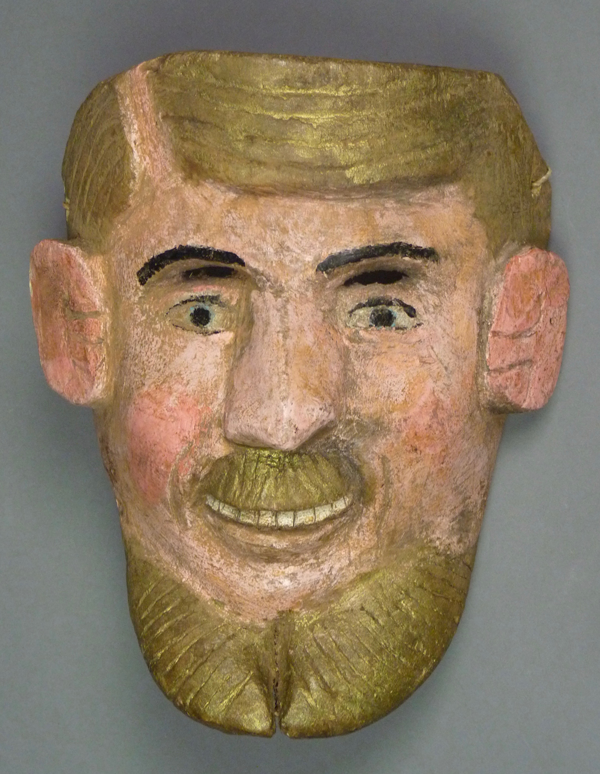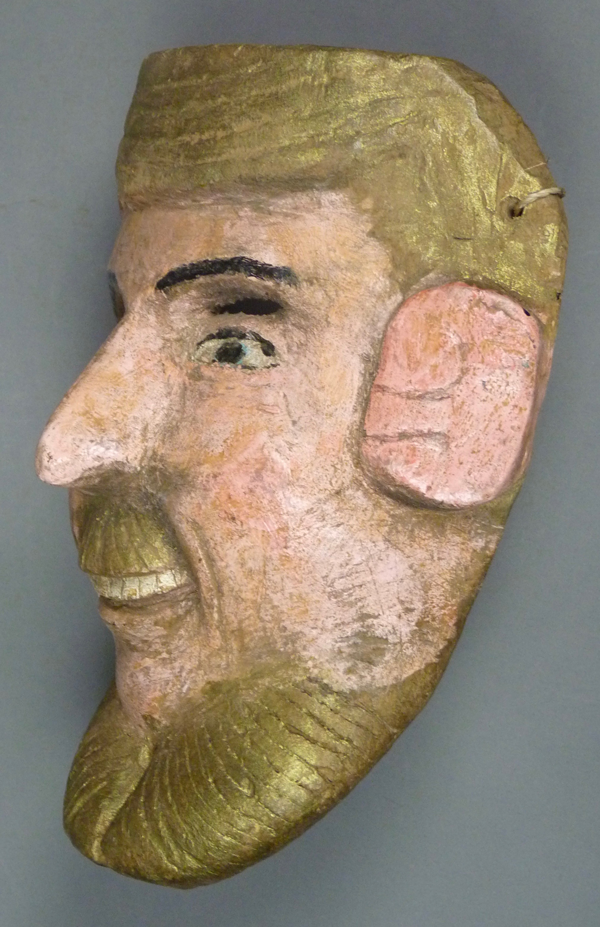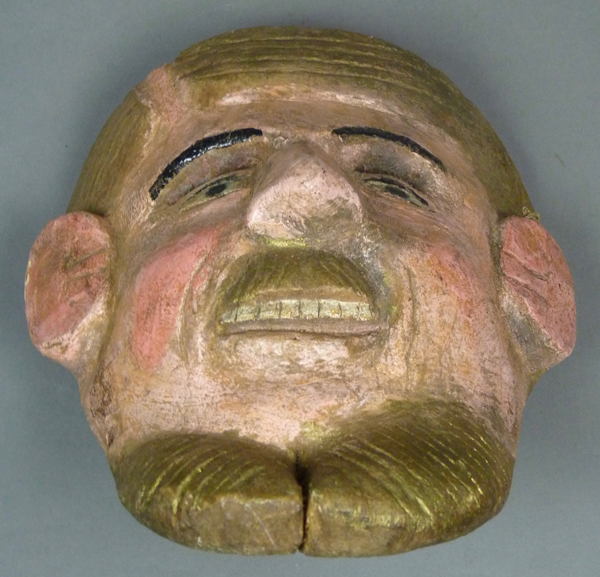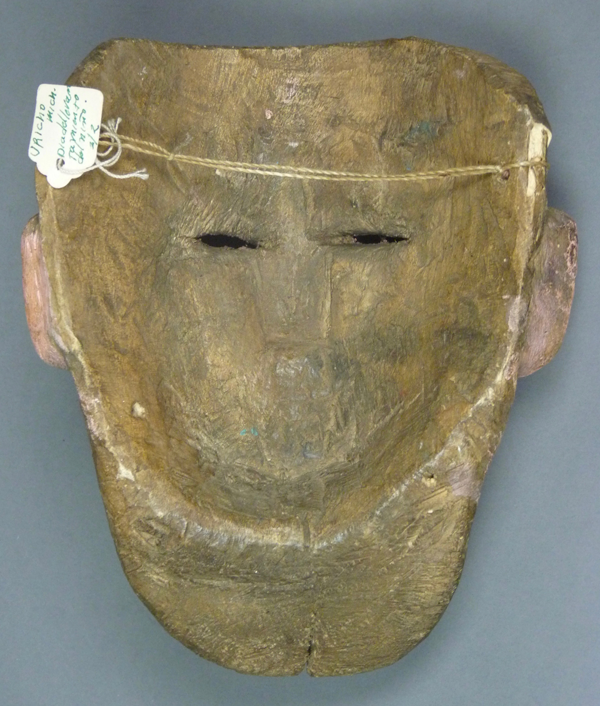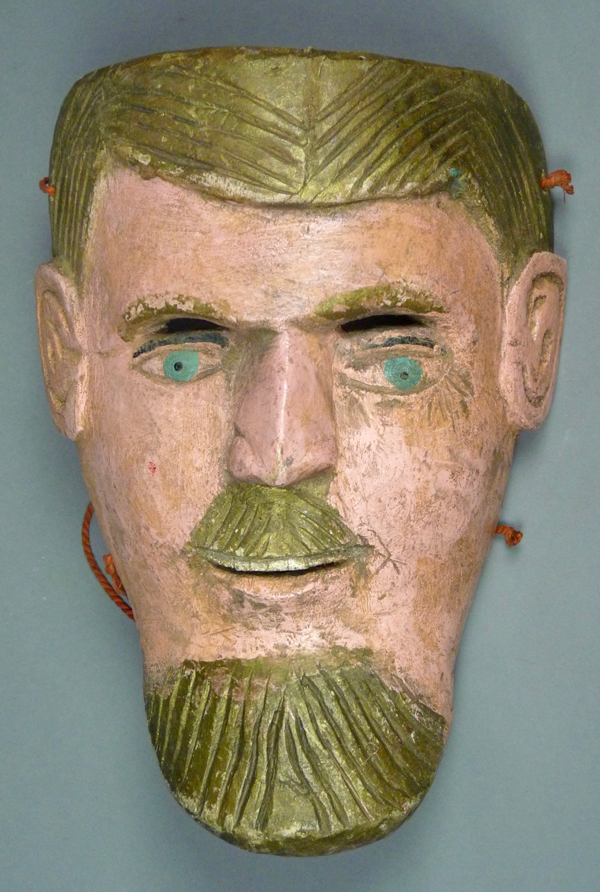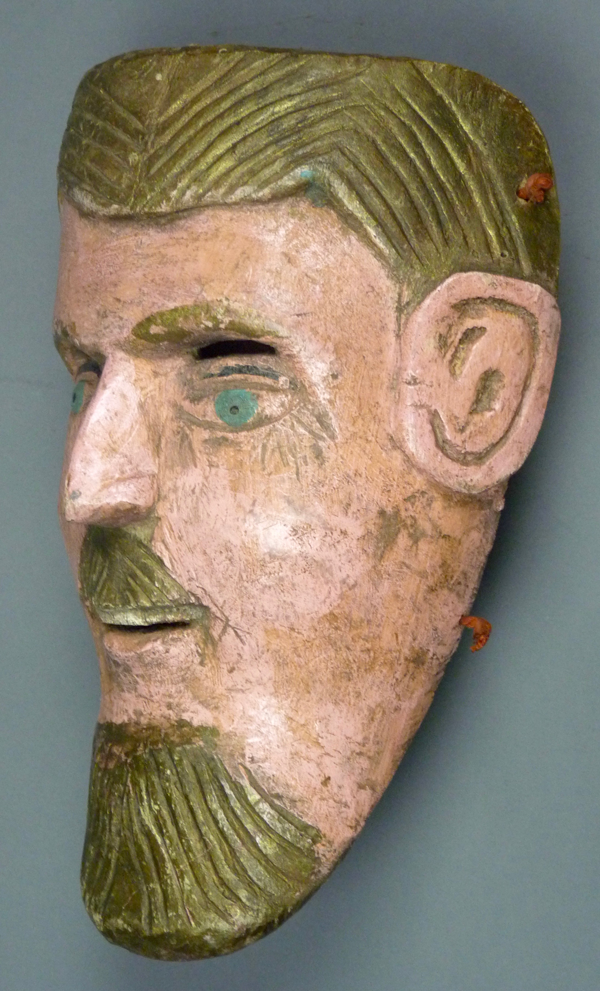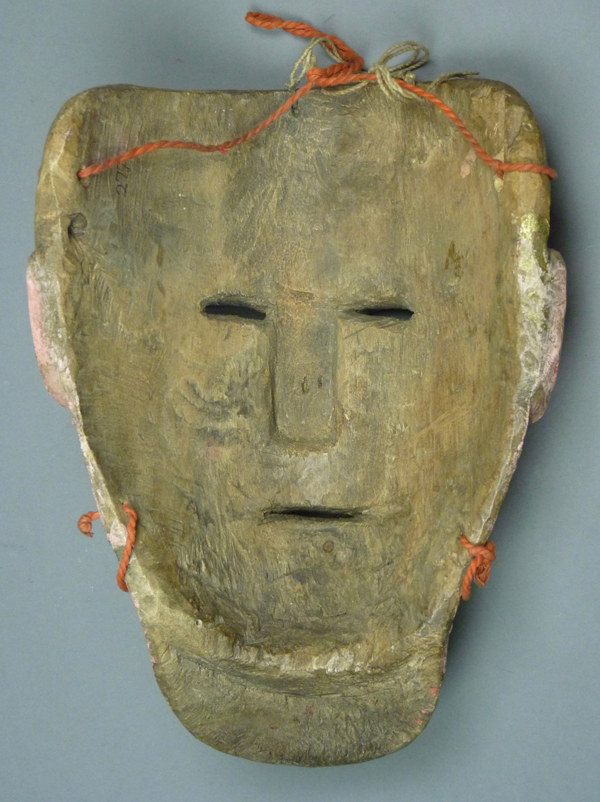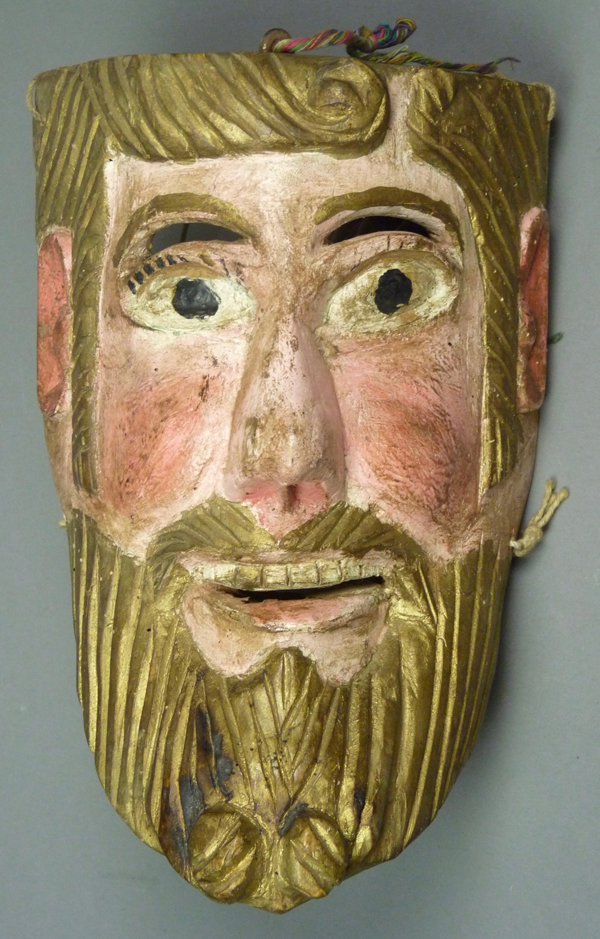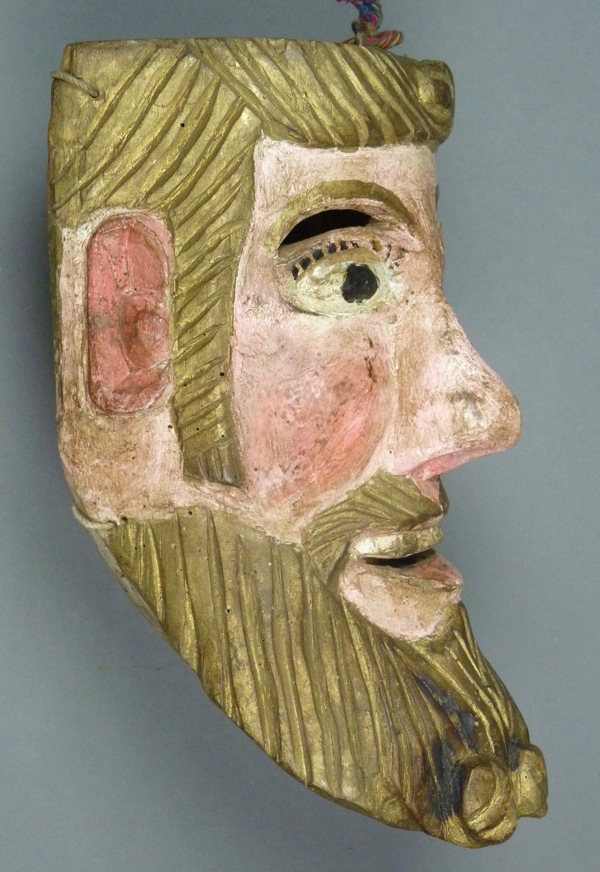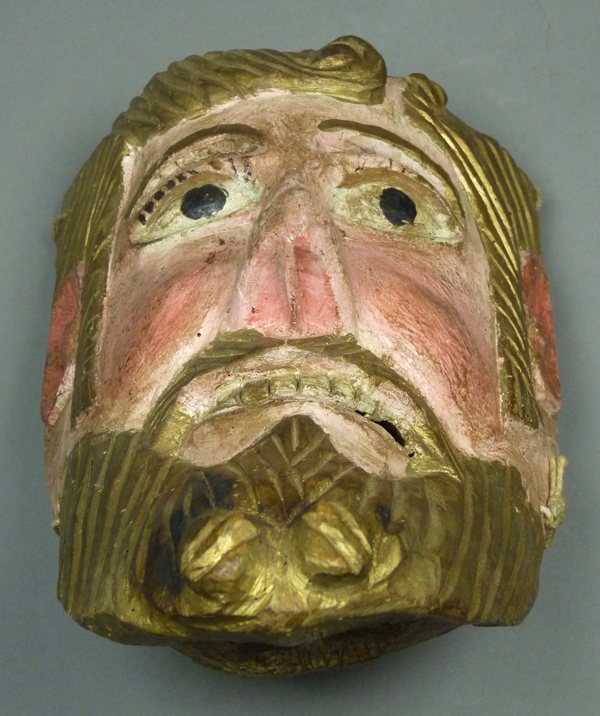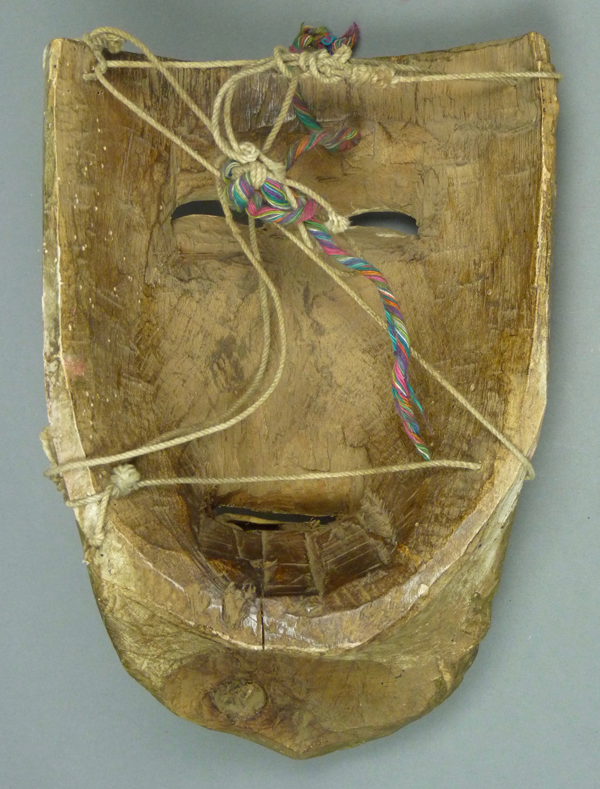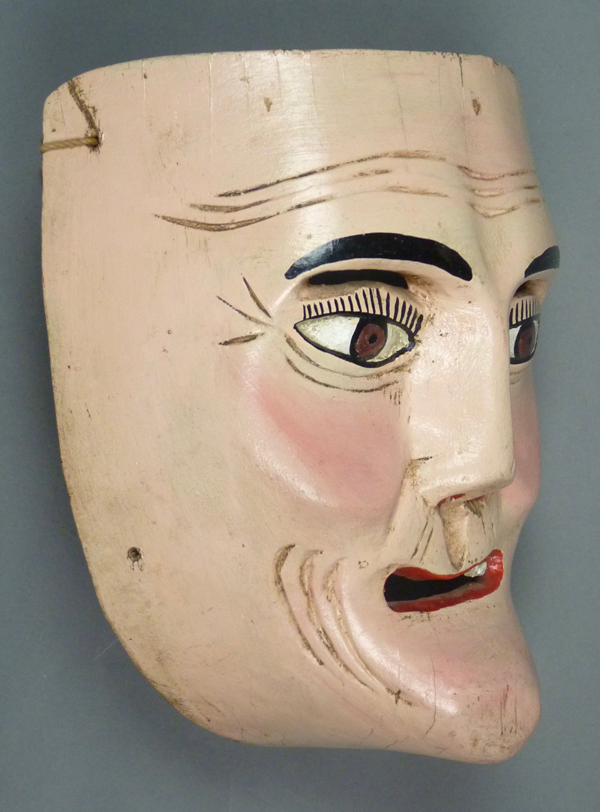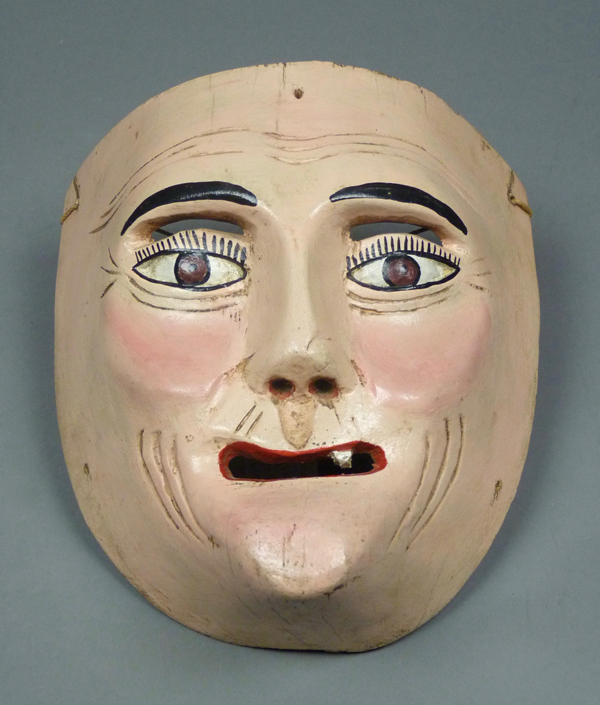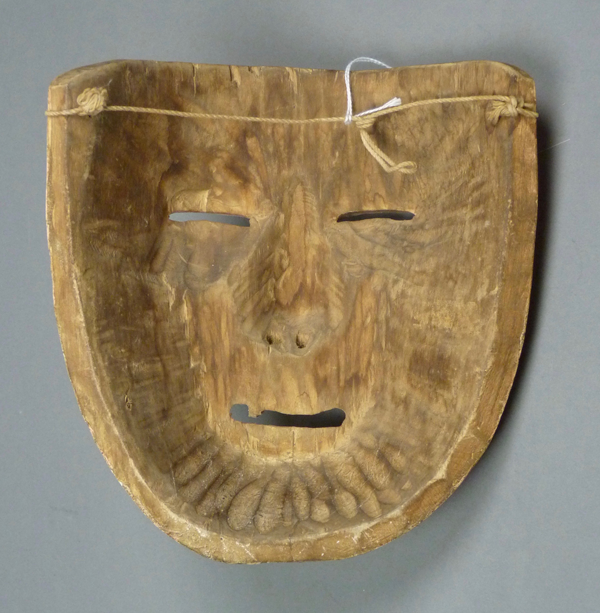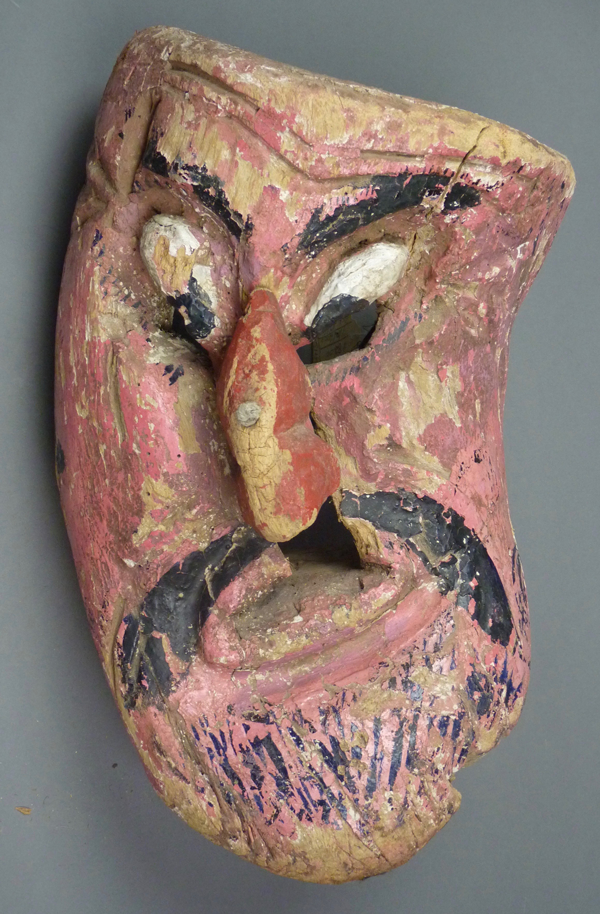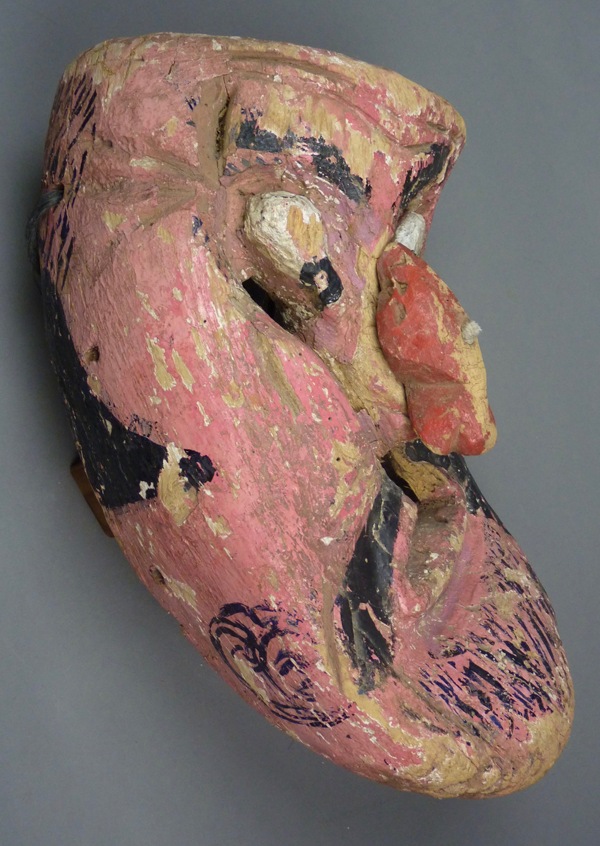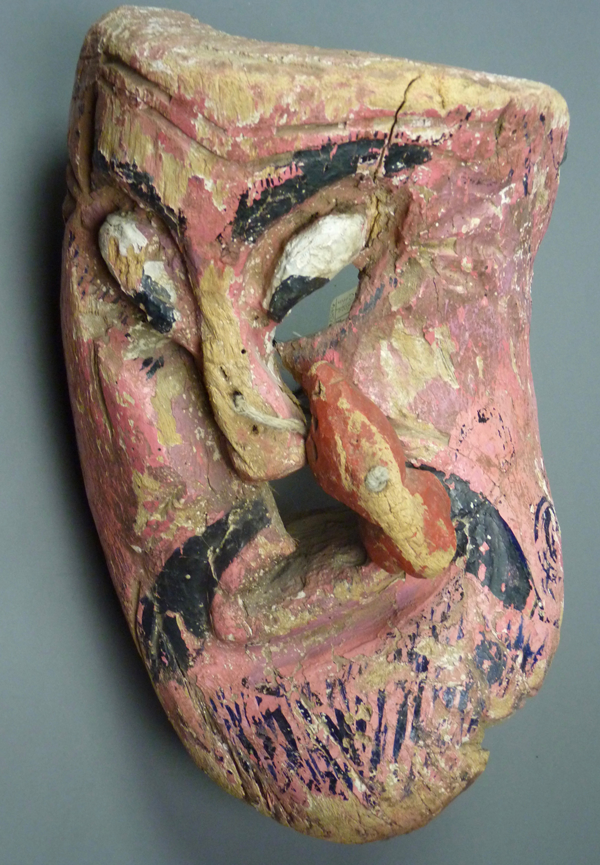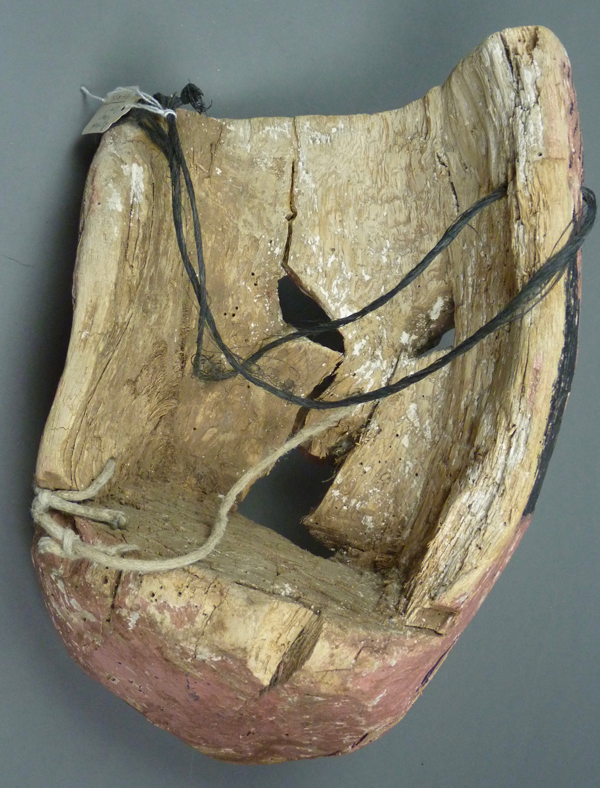Last week we looked at Viejito masks from Cherán and Uruapan, Michoacán, masks with amusing and highly stylized features. Just as we have seen with Curpite and Negritos masks, those used by Viejito dancers also demonstrate a range of designs. The differences are sufficiently pronounced to have misled dealers and collectors to label some Viejito masks as being from entirely different dances. Part of the problem has been that modern carvers have been more ambitious, creating fancier masks. The ready availability of YouTube™ documentation, when combined with photos from the few available illustrated books, allow one to at least begin to sort out this mystery.
Today’s first mask, which I bought from René Bustamante in 1994, listed this provenance on the tag—”Uricho, Mich.-Dia del levanta y niento del Niño 2/2.” The Christian feast of Candlemas, also called “The Presentation of the Infant Jesus,” occurs each year on February 2, 20 days after Christmas day. In the past, February 2 was actually considered to be the first day of the New Year. Searching on YouTube™ and in Calendario de Fiestas Populares (1988), I did not find any references to masked dances in San Francisco Uricho. The second and third masks, also obtained from René, were said to be from Purépero de Echáiz, and for whatever reason, I thought of all three as Españoles (Spaniards). One of these is obviously by the same hand as the first, while the other is only slightly different, as if from the same tradition but another carver. The Calendario reference book did confirm that Viejitos dance in Purépuro, but there was no listing for Viejitos at Candlemas. That reference book did confirm that many towns in Michoacán celebrate Candlemas with some sort of fiesta, and a YouTube video from Sicuicho, Michoacán showed Viejitos dancing on February 2 while wearing masks similar to the third in today’s group. Therefore I conclude that these first three masks were worn by Viejito dancers in that area of Michoacán. San Francisco Uricho and Sicuicho are about 100 miles apart, while Purépero de Echáiz lies in between, about 60 miles from either one. The link that follows features Viejitos dancing on Feb 2, 2017 (Candlemas) in Sicuicho. Note that Maringuilla is represented in this town by three unmasked women, rather than by men wearing female masks.
https://www.youtube.com/watch?v=ZvpjnT1o21o&vl=en
Further review of the Purepecha Masks 2002 Catalogue reveals that smiling Caucasian faces with golden hair (but lacking relief carved ears) can represent other dance characters, such as Kings, “Black Men,” Tare Andari, Monarcos, and Hermitaños, depending on the town.
Here is the mask with the tag linking it to Candlemas in San Francisco Uricho. In general, it seems that about half of the Viejitos in Michoacán have what we might call this “realistic” style, while the other half have the highly exaggerated style that we saw in last week’s post. What they have in common is a broad grin
This type usually has golden hair, mustache, and beard, while the other style of mask lacks hair altogether and requires the attachment of a wig.
This type also is depicted with a full set of teeth, at least on the upper side.
The realistic type Viejitoes usually have relief carved ears. This mask is 8½ inches tall, 7 inches wide, and 3½ inches deep.
The back is heavily stained from long use. I have included the tag, if only to illustrate how difficult it is to read (URICHO/Mich./diadellevan/toyniento/delniño/ 2/2)!
[Dia del Levanto y Niento del Niño. February 2: The Day of the Elevation (and the Beginning of the Year) of the Christ Child. Candlemas.] One online dictionary stated that el Niento means “the year.” Niento does not appear in any of my printed dictionaries.
The second mask looks a lot like the first, although there are minor differences.
Compared to the first, this one’s hair is much more subtly parted and the goatee is not bifurcated, yet this mask is a little larger that the first.
This mask is 10 inches tall, 7¼ inches wide, and 3½ inches deep.
This one too is heavily stained from use.
The third mask more closely resembles those in the YouTube video from Sicuicho, Michoacán.
The hair and beard are more elaborately carved.
This mask does share the same “realistic” characteristics with the other two Viejitos—relief carved hair and ears, plus a full set of upper teeth and a broad grin.
This mask is 8½ inches tall, 5¾ inches wide, and 3½ inches deep.
The third mask is as heavily stained as the others.
I purchased the next mask from Dinah Gaston in 2ooo as a Maringuilla Fea, an ugly Maringuilla, from an unknown town. This “ugly” label is much less about appearance and predominantly about morality and behavior. One is asked to model their behavior on that of Maringuilla Bonita,and NOT on that of Maringuilla Fea. According to Janet Esser, Feo and Fea masks are often roughly carved from inferior wood, so few survive. I am pleased to have this one, which was apparently more carefully made than usual.
The ugly behavior accompanies a harsh face.
Angular features amplify this message.
This mask is 8½ inches tall, 7¾ inches wide, and 3 inches deep.
This is another heavily worn mask.
In the state of Michoacán there are many local traditions of feos (Uglies), some called by that name and some with other names. The last mask in today’s post is a feo type mask from Santa Fe de la Leguna, Michoacán; the dancer is called a Ch’enchekicha. I bought this mask on EBay in 2002, without any knowledge of its name or purpose. I was fascinated to find a mask that had the nose tethered on a rope so that it could not be stolen, just as the horns were tethered on the Diablo mask in my post of August 14, 2017. Several years later I discovered the identity of this exciting mask in the Purepecha Masks 2002 Catalogue (on page 63, and on page 46 in the Spanish edition). I believe that these masks are rare and remarkable.
Here is the Ch’enchekicha mask from Santa Fe de la Luna. There is a broken area under the nose, a missing section of the rim of the mouth. A knot in the middle of the nose reveals the rope that tethers the nose to the mask. This nose appears to be a later addition. The mask in the Purepecha Masks 2002 Catalogue lacks a removable nose or evidence that it ever had one.
“Go ahead, just try to grab and steal my nose!” Note that this mask has an unusual shape; it twists and turns.
If someone had tried to steal the nose, they would have found it firmly attached to the mask by a rope. This mask is 13 inches tall, 8½ inches wide, and 7 inches deep.
This old and worn mask has areas that are split and broken. The white tether for the nose is firmly tied to the mask. There is obvious wear.
Next week I will present additional characters from another sub-group of the Viejos and Viejitos—the Corcobi and the Tecolotes (owls).

